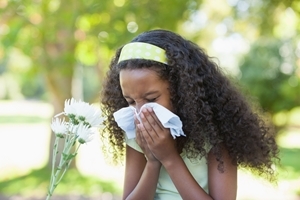For many travel nursing professionals, there is one condition that always seems to plague most of the patients you see: allergies. Most people associate allergies with the springtime, but the truth is, allergies can affect your patients during many times of the year, including during summer and well into the fall months.
Histamine responses, as you know, aren't necessarily a serious issue for most of your patients. However, they can make day-to-day life very difficult and even miserable for some. One pattern that you may have noticed recently during your trips as a travel nurse? Allergies aren't just more common for patients, but they are also increasing in severity.
Climate change and allergies
Changes to the climate have been making allergy seasons longer and more robust. According to Dr. Clifford Bassett, founder and medical director of Allergy and Asthma Care of New York, global warming patterns are creating allergy issues in a number of ways:
"There's a couple factors," Bassett explained to The Weather Channel. "One is the rising long term increase in carbon dioxide and its effect on increased production of pollen," another is what he calls "the priming effect." Lastly, pollen-producing male trees are overtaking much of the green space in large cities.
The explanation is simple. When there is more carbon dioxide and humidity in the air, pollen will produce at a faster rate. However, that's just part of the story. Rising temperatures in general can contribute to stronger spring allergy seasons in the next year, according to Bassett, creating a cyclical effect. Wetter winters (which are also becoming more common) will also foster conditions for higher pollen counts.
"In some studies, a very heavy precipitation during the fall and winter may be enough to enhance the pollen production, particularly in grass pollen," Bassett said. "So we may see more grass pollens flowering early and more robustly from a very heavy precipitation in fall and winter, which we've seen in many areas."
Different types of allergies
There are many types of ways that your patients can experience histamine reactions. Here are the most common environmental allergens affecting your patients during your travel nursing assignments:
- Tree pollen: You might start to see tree pollen allergies as early as March. Advise your patients to begin checking daily pollen counts with the National Allergy Bureau of the American Academy of Allergy Asthma and Immunology, according to Everyday Health.
- Grass pollen: In the middle of spring, flowers will begin to bloom, and when the pollen of the flowers combines with the grass that also starts to grow, it can become quite a dangerous combination for people with outdoor allergies. The emergence of grass and tree pollen can begin as early as April and extend into June, so your patients may need medications for four consecutive months once spring allergy season begins.
- Molds and spores: During the middle of summer, the grass and tree pollens will begin to subside. However, fungus will begin to grow on fallen grasses, compost material and grain. When this factor combines with the humidity in mid-summer, it can only make allergy symptoms worse.
- Ragweed: This allergen will begin blooming in early fall, usually September. Because ragweed is light and grows on the top of plants, it spreads very well and can coat much of the surface, resulting in allergies well into late autumn, depending on where you live.
Advise your patients to keep indoor spaces clean, as you can track many of these irritants indoors. Patients must also know exactly what they are allergic to so that medical staff can better track allergies in patients. More than two-thirds of spring allergy patients suffer from these symptoms year-round, according to the ACAAI, so make sure you encourage them to follow these other tips from the organization:
- Keep up with personal hygiene: Allergens can linger in hair and clothes, making symptoms worse.
- During peak allergy seasons, stay inside from midday through the afternoon, as pollen counts are especially high during these times.
- Although those spring breezes might be tempting, it's important for your patients keep windows in their home and car shut to avoid bringing allergens indoors.
As we head into fall allergy season, now is the time to be diligent about educating your patients about histamine responses and how to prevent them.

